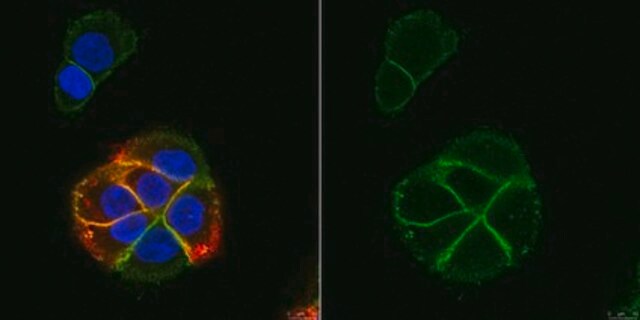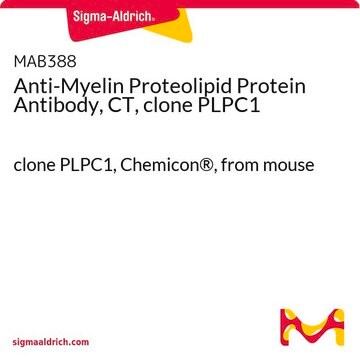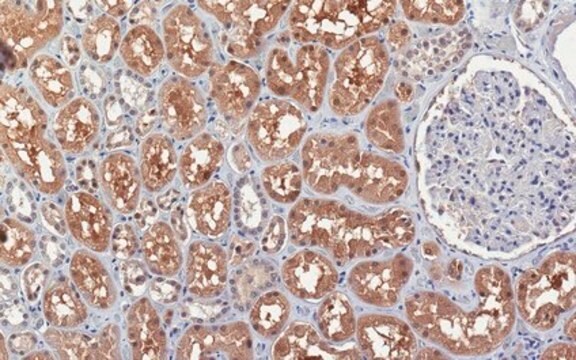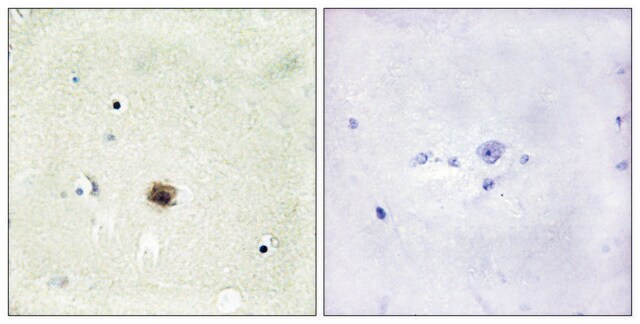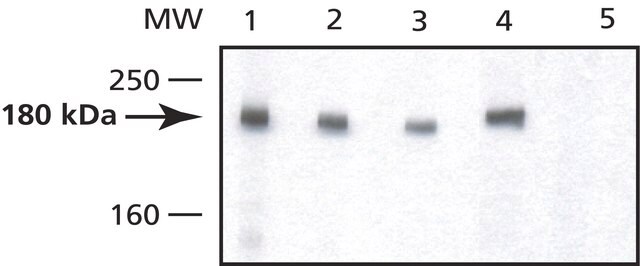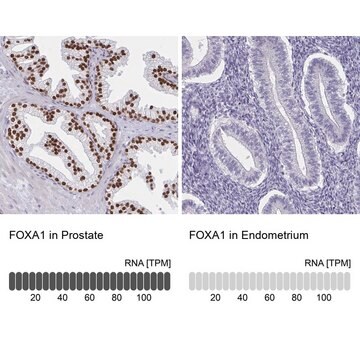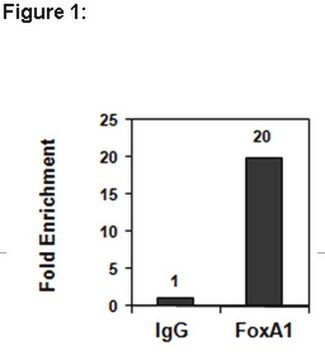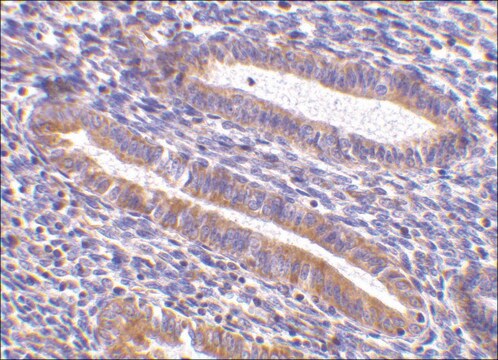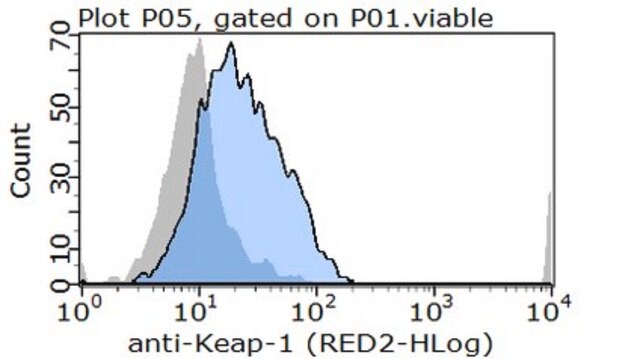MABF2105
Anti-CD6 Antibody, clone UMCD6
clone UMCD6, from mouse
Synonym(e):
T-cell differentiation antigen CD6, T12, TP120
About This Item
Empfohlene Produkte
Biologische Quelle
mouse
Antikörperform
purified immunoglobulin
Antikörper-Produkttyp
primary antibodies
Klon
UMCD6, monoclonal
Speziesreaktivität
human
Verpackung
antibody small pack of 25 μg
Methode(n)
dot blot: suitable
flow cytometry: suitable
immunoprecipitation (IP): suitable
inhibition assay: suitable
Isotyp
IgG1κ
NCBI-Hinterlegungsnummer
UniProt-Hinterlegungsnummer
Posttranslationale Modifikation Target
unmodified
Angaben zum Gen
human ... CD6(923)
Allgemeine Beschreibung
Spezifität
Immunogen
Anwendung
Induces Function: A representative lot showed strong synergistic effect with phorbol ester in inducing T cell activation and enhanced the autologous mixed lymphocyte reaction. (Bott, C.M., et. al. (1993). Int Immunol. 5(7):783-92).
Dot Blot Analysis: A representative lot detected CD6 in Dot Blot applications (Bott, C.M., et. al. (1993). Int Immunol. 5(7):783-92).
Immunoprecipitation Analysis: A representative lot immunoprecipitated CD6 in Immunoprecipitation applications (Bott, C.M., et. al. (1993). Int Immunol. 5(7):783-92).
Flow Cytometry Analysis: A representative lot detected CD6 in Immunoprecipitation applications (Singer, N.G., et. al. (1996). Immunology. 88(4):537-43; Bott, C.M., et. al. (1993). Int Immunol. 5(7):783-92; Bott, C.M., et. al. (1994). J Immunol. 153(1):1-9; Li, Y., et. al. (2017). Proc Natl Acad Sci USA. 114(10):2687-2692).
Qualität
Flow Cytometry Analysis: A 1:1000 dilution of this antibody detected CD6 in one million Jurkat cells stimulated with PMA.
Zielbeschreibung
Physikalische Form
Sonstige Hinweise
Sie haben nicht das passende Produkt gefunden?
Probieren Sie unser Produkt-Auswahlhilfe. aus.
Analysenzertifikate (COA)
Suchen Sie nach Analysenzertifikate (COA), indem Sie die Lot-/Chargennummer des Produkts eingeben. Lot- und Chargennummern sind auf dem Produktetikett hinter den Wörtern ‘Lot’ oder ‘Batch’ (Lot oder Charge) zu finden.
Besitzen Sie dieses Produkt bereits?
In der Dokumentenbibliothek finden Sie die Dokumentation zu den Produkten, die Sie kürzlich erworben haben.
Unser Team von Wissenschaftlern verfügt über Erfahrung in allen Forschungsbereichen einschließlich Life Science, Materialwissenschaften, chemischer Synthese, Chromatographie, Analytik und vielen mehr..
Setzen Sie sich mit dem technischen Dienst in Verbindung.